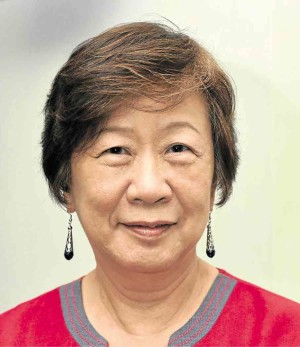Chinese education redefined
Dr. Dory Poa is the president of Chiang Kai Shek College, the largest Chinese-Filipino school in the Philippines, with successful alumni like SM’s Henry Sy, PNB’s Lucio Tan and Jollibee’s Tony Tan Caktiong.
A language expert, Dr. Poa obtained her doctorate from Stanford University and taught in the Philippines, the United States, Taiwan, Hong Kong, and Australia prior to her present assignment.
Here, she shares her insights on reforming the Chinese curriculum in the elementary and high school level and making students truly multilingual.
Q: What was your mandate when you assumed the presidency of Chiang Kai Shek College in 2013?
A: One of the most immediate challenges that the college was facing then was the pressure to meet the requirement set forth by the Department of Education for all schools to be K-12 complaint by the year 2016. To make this happen without sacrificing the quality of education and without financially over-burdening our students and parents, I worked out a three-year transition program that was implemented when I assumed office as president in June of the school year 2013.
CKS College has received a number of compliments from educators commending our Transition Program as one of the best K-12 transition programs.
When I assumed office in June 2013, the teaching of Chinese was also facing a great challenge. CKS College is a premiere Filipino-Chinese school that has been known for educating students who are fluent in at least four languages (English, Tagalog, Mandarin, and Hokkien). However, for some years there was a view within the Chinese community that graduates of this bilingual program were no longer fluent in Chinese. Furthermore, Chinese was becoming unpopular among students. I then put reforming the Chinese curriculum on the top of my agenda.
Based on my experience as a language educator, and based on my previous experience and in my long term observation of the teaching of Chinese in Filipino-Chinese schools, I came to identify the core of the problem as the teaching approach and the teaching materials.
Traditionally among the Filipino-Chinese schools in the Philippines, the teaching of Chinese was mainly the teaching of Mandarin, which was being taught as if it was the first language of the students, and the textbooks used were designed for first language learners. Yet Chinese in the Philippines are not native Mandarin speakers; their ancestors mainly originated from the Southern part of Fujian Province in China, where they speak a language known as Minnanhua (Southern Min, popularly known as Hokkien). Not only do they not speak Mandarin, most members of the younger generations are barely fluent in their ethnic language (Minnanhua/Hokkien), though the lingua franca in the Chinese community is still Minnanhua/Hokkien. Because of these factors, the teaching approach and materials were not suitable for them; they should be learning Mandarin as a second language if not as a foreign language. It was in this light that the present CKS Chinese Academic Curriculum Reform was developed.
Q: What were the major pain points of parent and student customer segments then and how did you address each of these major pain points?
A: There was not much of a problem with parents and students. Only a handful of conservative parents resisted the change, as they interpreted it as lowering the standard of Chinese, or for not giving importance to the learning of Chinese culture and history.
I did not see any resistance from students mainly because the new approach made it easier for them to learn the language.
At least, you don’t hear much of “I hate Chinese” among students anymore. —CONTRIBUTED

